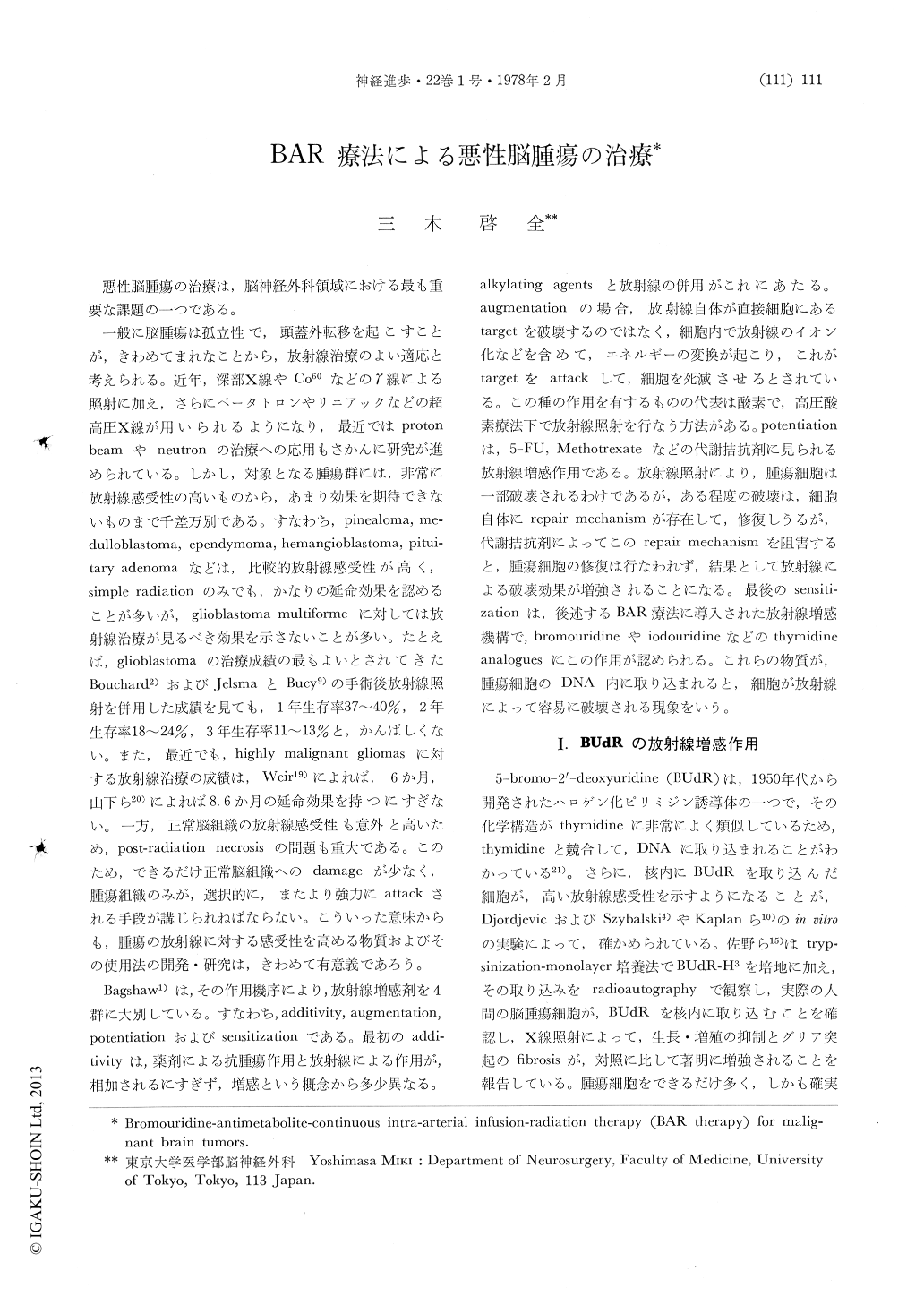Japanese
English
- 有料閲覧
- Abstract 文献概要
- 1ページ目 Look Inside
悪性脳腫瘍の治療は,脳神経外科領域における最も重要な課題の一つである。
一般に脳腫瘍は孤立性で,頭蓋外転移を起こすことが,きわめてまれなことから,放射線治療のよい適応と考えられる。近年,深部X線やCo60などのγ線による照射に加え,さらにベータトロソやリニアックなどの超高圧X線が用いられるようになり,最近ではprotonbeamやneutronの治療への応用もさかんに研究が進められている。しかし,対象となる腫瘍群には,非常に放射線感受性の高いものから,あまり効果を期待できないものまで千差万別である。すなわち,pinealoma,medulloblastoma,cpendymoma,hemangioblastoma,pituitary adenomaなどは,比較的放射線感受性が高く,simple radiationのみでも,かなりの延命効果を認めることが多いが,glioblastoma multiformeに対しては放射線治療が見るべき効果を示さないことが多い。たとえば,glioblastomaの治療成績の最もよいとされてきたBouchard2)およびJelsmaとBucy9)の手術後放射線照射を併用した成績を見ても,1年生存率37〜40%,2年生存率18〜24%,3年生存率11〜13%と,かんばしくない。
The mechanism of the radiosensitizers and the theory of BAR therapy were reviewed. 5-bromo-2'-deoxyuridine (BUdR) is well known to be incorporated into the nuclei of cultured human brain tumor cells. And the facts that the tumor cells which have taken up BUdR into their nuclei become more radiosensitive and that a small amount of antimetabolite enhances the incorporation of BUdR had been confirmed.

Copyright © 1978, Igaku-Shoin Ltd. All rights reserved.


